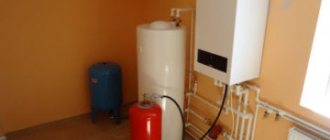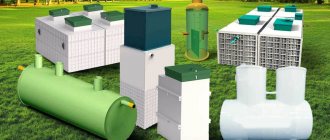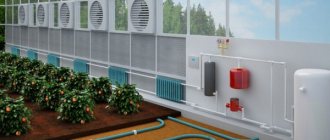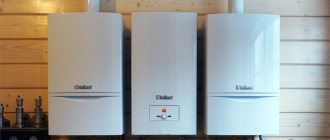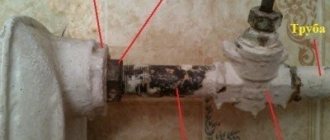A solar collector is a technical device used to convert solar energy into thermal energy. According to the type of coolant, solar collectors are divided into air and liquid, in which the coolant is water or another liquid substance (antifreeze, ethylene glycol, etc.). By design, these devices are either flat or vacuum.
Operating principle
All types of solar collectors can be used to heat a residential building or other facility, but the principle of their operation, regardless of the design and type of coolant, is the same.
The principle of operation of a solar collector is based on the ability of materials to absorb the energy of the sun in visible and invisible ranges to the human eye, and therefore, within a given material, physical processes begin, molecules begin to move faster, the material (substance) heats up. The heat generated by materials exposed to the sun's rays is transferred to the coolant for subsequent use.
We equip housing correctly
To preserve heat in the house, you should pay attention to the choice of interior doors. Where can you buy interior doors so that you don’t regret your purchase for a minute? How to protect yourself from possible counterfeits and unscrupulous manufacturers? What to do if you are ready to invest a sufficient amount of money to buy interior doors, but are not inclined to trust specialists with low qualifications? The conclusion in this case is simple - turn to the services of a company that sells a wide range of models of interior doors, represented by various design solutions and manufacturers. Our range is constantly expanding and updating, and the high qualifications of our staff are beyond doubt.
In our store you can always find interior doors designed in line with the main trends of traditional classics or corresponding to one of the many trends in modern interior design. Each product is not only equipped with reliable, functional and effective fittings, but also has a certificate of quality compliance with the main existing standards. By purchasing interior doors from us, you thereby give preference to absolutely harmless products made from environmentally friendly raw materials.
Additional costs associated with operation
Using this does not imply any care or maintenance other than periodic cleaning of dirt and snow in winter (unless it thaws itself). However, there will be some associated costs:
- Repairs, everything that can be changed under warranty can be replaced by the manufacturer without any problems, it is important to buy an official dealer and have warranty documents.
- Electricity, very little of it is spent on the pump and controller. For the first one, you can install only 1 solar panel of 300 W and it will be quite enough (even without a battery system).
- Washing the coils will need to be done once every 5-7 years. It all depends on the quality of the water (if it is used as a coolant).
The principle of operation of the solar collector
Schematically, the operating principle of various types of devices can be reflected as follows:
- Flat-plate solar collector operating using liquid coolant:
- Flat air solar collector:
- Vacuum solar collector, with liquid coolant:
Kinds
In accordance with the design, type of coolant and method of its use and heat transfer, solar collectors are:
By type of construction:
- Flat – they are a rectangular (box)-shaped structure, made of durable material and serving as the body of the device. Insulation is placed in the interior of the housing, on the surface of which an absorbent (heat-absorbing) plate is mounted. Tubes (usually made of copper) are placed in special recesses of the absorber, into which coolant is subsequently supplied. From the outside, the housing is closed with an absorbent shell and protective glass.
- Vacuum - in a device of this type, a certain number of vacuum tubes are combined in a common collector housing. A heat exchanger is installed in the housing, in which the coolant circulating in the internal circuit of the vacuum tubes transfers the received energy to the coolant of the outer circuit.
By coolant type:
- Air;
- Mermen.
According to the method of using the coolant:
- Passive - the solar collector is used in conjunction with a storage tank and serves for hot water supply, without installing additional engineering network elements (circulation pump, protection elements, etc.).
- Active - the system, in addition to installing the collector, is equipped with technical devices (pump, safety valves, storage tank, additional elements for heating the coolant), and can be used for both hot water supply and space heating.
By heat transfer method:
- Indirect action, when in the heating (hot water supply) system there is a storage tank (storage tank), in which thermal energy received by the external circuit from the sun's rays is transferred and transferred to the internal circuit circulating in the hot water supply and heating systems.
- Direct action, direct flow - this method is used in hot water supply systems, whereby water circulation in the collector circuit is carried out under the influence of temperature differences and by installing additional elements (taps, valves, etc.).
What should the heat collector be like?
The heat collector is another very important working element of the vacuum manifold. Through this unit, accumulated heat is transferred from the tubes to the coolant.
The heat collector is located at the top of the device. One of its components, a copper core, receives energy and transfers it to the main coolant circulating in a closed tank-collector heat exchanger system.
Correct operation is guaranteed by a circulation pump connected to the system. The automation that controls the heating complex clearly monitors the temperature level in the channels and, if it falls below the permissible critical minimum (for example, at night), stops the pump.
This allows you to avoid backheating, when the coolant begins to take away the heat of the hot water collected in the storage tank.
How does it work in winter?
In heating systems, as a rule, vacuum collectors are used, this is determined by their technical characteristics and operating conditions.
The main element of a vacuum solar collector is a vacuum tube, which consists of:
- An insulating tube made of glass or other material that transmits the sun's rays with minimal loss of their power;
- Copper heat pipe placed in the inner space of the insulating tube;
- Aluminum foil and absorbent layer located between the tubes;
- The cover of the insulating tube, which is a sealing gasket that provides a vacuum in the internal space of the device.
The system works as follows:
- Under the influence of solar energy, the coolant of the tube circuit evaporates and rises, where it condenses in the collector heat exchanger, transfers its heat to the coolant of the outer circuit, after which it flows down, and the process repeats.
- The external circuit coolant, from the solar collector heat exchanger, is supplied to the storage tank, where the resulting thermal energy is transferred to the coolant of the heating and hot water supply system.
- The circulation of the external circuit coolant is carried out by installing a circulation pump and automation systems that ensure the system operates in automatic mode.
- The automation system complex includes a controller, sensors and controls that ensure the established operating parameters of the system (temperature, liquid flow in the DHW system, etc.)
In order for this system to be effective and cope with the assigned tasks, including in winter, the system provides for the installation of backup energy sources. This may be an additional heating system using a coolant, as in the diagram above, when the additional circuit coolant is heated by using various types of fuel (gas, biofuel, electricity). Also, a similar task can be accomplished by installing electric heating elements directly into the battery tank. The operation of backup energy sources is controlled by an automation system, turning on these devices as needed.
Temperature division of water heating equipment
The consumer is offered a lot of different device options, but their main difference lies in the temperatures they achieve. According to this principle, they are made into three main types of collectors:
- The first is low temperatures (they give low temperatures up to 50 degrees Celsius); the main calculation of application is heating a pool or other options when there is no need to heat the water very much.
- Next come medium temperature collectors (they raise the temperature from 50 to 80 degrees) the main calculation of the application is for heating industrial buildings and residential premises.
Medium temperature collectors are used for heating industrial buildings and residential premises.
- The third type is high temperature collectors (used in industry to generate electricity with subsequent distribution to the central electrical network).
Is it profitable?
Everyone determines whether it is profitable to use solar collectors individually, depending on the region of residence, the need for thermal energy and depending on financial capabilities. The region of residence is an important criterion when determining the effectiveness of the use of devices used to convert solar energy into other types of energy. Solar activity (duration of sunshine) varies in different regions of our country, as can be seen in the diagram below.
From this diagram it is clear that the most favorable regions for the use of solar energy, with a duration of solar activity of more than 2000.0 hours per year, are located in the southern regions of the country. In these areas there are also no cold and long winters, which determines the possibility of successful use of solar collectors in heating and hot water supply systems in these regions of Russia.
If it is necessary to create a completely autonomous system from external, traditional suppliers of thermal energy, you should remember that by installing only a collector, it will not be possible to create such a system, since electrical energy is required to create coolant circulation and operate the automation system. Therefore, for complete autonomy, it is necessary to work out the issue of independent power supply to the connected facility. Consequently, in order to make a completely independent system, additional financial costs will be required, which will increase the payback period of the equipment.
How to make it yourself
The simplest, but nevertheless effective option is a flat solar collector, which uses water as a coolant.
The body of the device is made from materials available at hand. It can be wood, profiled black or non-ferrous metal. The dimensions of the frame are determined by the location of the solar collector, its purpose and the availability of the required materials.
Insulation is placed in the interior of the housing, on top of which a copper tube is laid. To create a larger absorbing area, the tube is laid in the shape of a coil. To increase the efficiency of the device, you can put a layer of foil under the tube (not shown in the diagram), this will reduce heat loss to the bottom side of the device and increase the temperature in the internal space of the case.
From the outside, the case is covered with protective glass, the cracks are sealed. Cold and hot water pipes are installed at the entry and exit points of the pipes. A device manufactured in this way can be used for hot water supply to a summer shower and heating water in a swimming pool; for this, the collector pipes are connected to the selected systems, after which the device is ready for operation.
Structural drawings
Let's get started
Before building a solar collector, it is necessary to make the appropriate calculations and determine how much energy it should produce. But you shouldn’t expect high efficiency from a homemade installation. Having determined that there will be enough of it, you can begin.
The work can be divided into several main stages:
- Make a box
- Make a radiator or heat exchanger
- Make a front camera and storage device
- Assemble the collector
To make a box for a solar collector with your own hands, you should prepare an edged board 25-35 mm thick and 100-130 mm wide. Its bottom should be made of textolite, equipped with ribs. It should also be well insulated using polystyrene foam (but preference is given to mineral wool), covered with a galvanized sheet.
4 more effective ways to alternatively heat your home
Which you can learn about in our next article.
Having prepared the box, it’s time to make the heat exchanger. You should follow the instructions:
- It is necessary to prepare 15 thin-walled metal tubes 160 cm long and two inch pipes 70 cm long
- In both thickened tubes, holes are drilled with the diameter of the smaller tubes into which they will be installed. In this case, you need to ensure that they are coaxial on one side, the maximum step between them is 4.5 cm
- The next stage is that all the tubes need to be assembled into a single structure and welded securely
- The heat exchanger is mounted on a galvanized sheet (previously attached to the box) and fixed with steel clamps (metal clamps can be made)
- It is recommended to paint the bottom of the box in a dark color (for example, black) - it will better absorb solar heat, but to reduce heat loss, the external elements are painted white
- To complete the installation of the collector, it is necessary to install a cover glass near the walls, while not forgetting about reliable sealing of the joints
- A distance of 10-12 mm is left between the tubes and the glass
All that remains is to build a storage tank for the solar collector. Its role can be played by a sealed container, the volume of which varies about 150-400 l
. If you cannot find one such barrel, you can weld several small ones together.
Like the collector, the storage tank is thoroughly insulated from heat loss. All that remains is to make a fore-chamber - a small vessel with a volume of 35-40 liters. It must be equipped with a water-falling device (a swivel valve).
The most responsible and important stage remains - to assemble the collector together. You can do it this way:
- First you need to install the front camera and storage. It is necessary to ensure that the liquid level in the latter is 0.8 m lower than in the front chamber. Since a lot of water can accumulate in such devices, it is necessary to think about how they will be reliably shut off
- The collector is placed on the roof of the house. Based on practice, it is recommended to do this on the south side, tilting the installation at an angle of 35-40 degrees to the horizontal
- But you need to take into account that the distance between the storage tank and the heat exchanger should not exceed 0.5-0.7 m, otherwise the losses will be too significant
- At the end, the following sequence should be obtained: the front camera must be located above the drive, the latter - above the collector
The most important stage is coming - it is necessary to connect all the components together and connect the water supply network to the finished system. To do this, you will need to visit a plumbing store and purchase the necessary fittings, adapters, sockets and other shut-off valves. It is recommended to connect high-pressure sections with a pipe with a diameter of 0.5 inches, low-pressure sections with a diameter of 1 inch.
Commissioning is carried out as follows:
- The unit is filled with water through the bottom drainage hole
- The anterior chamber is connected and the fluid levels are adjusted
- It is necessary to walk along the system and check that there are no leaks
- Everything is ready for everyday use
Advantages and disadvantages
Like any technical device, the solar collector has its pros and cons, both in terms of the possibility of use and operation, and in terms of other parameters and indicators. Depending on the design of the device, the pros and cons vary, so it is necessary to consider them separately from each other.
Flat solar collectors.
Advantages of use:
- When used in southern regions with warm climates, the best indicators in the price-performance ratio;
- During precipitation in the form of snow, they have the ability to self-clean;
- They have high efficiency when used in summer;
- Relatively low cost in comparison with analogues of other designs.
The disadvantages are:
- Significant heat losses caused by the design features of the device;
- Low efficiency when working in the autumn-spring period;
- Difficulty in transporting and installing finished products;
- The high windage of the structure creates a risk of damage to its elements during operation;
- Difficulty and labor-intensive repair work.
Vacuum solar collectors.
Advantages of use:
- When used in regions with cold and temperate climates, the best indicators in the price-performance ratio;
- Insignificant heat losses during operation, in comparison with analogues of other designs;
- Ability to work at low and negative ambient temperatures;
- Ability to work in low solar activity in the morning and evening hours, as well as in the absence of direct sunlight (cloudy weather);
- Easy and convenient installation, transportability of structures;
- Reliability during operation.
The disadvantages are:
- Relatively high cost;
- Strict installation requirements that determine the location of the collector in space in relation to the surface of the earth.
Coolants for solar systems
The main coolant for heating systems is water. However, its use in solar systems is limited by the crystallization temperature of 0°C, which means the use of water as a coolant is limited to climatic zones where there are no negative temperatures. In addition, the salts contained in the water clog the heating surfaces with scale, and the corrosive agent - oxygen - damages the metal parts of heating systems and contributes to the decomposition of the coolant into its component elements. Therefore, a type of coolant was developed for solar systems that is devoid of the above disadvantages.
The basis of this coolant is propylene glycol mixed with water that has undergone water treatment in the form of demineralization.
In addition, to reduce the corrosive and decomposing effects of oxygen, antioxidant additives are added to the coolant, the formation of gas bubbles in the liquid is reduced by the addition of defoamers, and stabilizers added to the coolant help keep the solution chemically homogeneous. As a rule, coolants for solar systems are sold ready-made. The concentration of propylene glycogel in them is 40% and higher, which corresponds to a crystallization temperature of -30°C and lower. The acid-base balance (pH) for the finished coolant is maintained in the alkaline zone (≥ 7.0) to reduce the corrosive effect.
When using solar system coolants, you should not mix coolants from different manufacturers, since compositions that are different in both quantitative and qualitative properties can enter into a chemical reaction, rendering the solar system unusable.
Solar energy in the conditions of the current energy and economic crisis is one of the most promising areas of technology aimed at preserving the irreplaceable resources of our planet.

